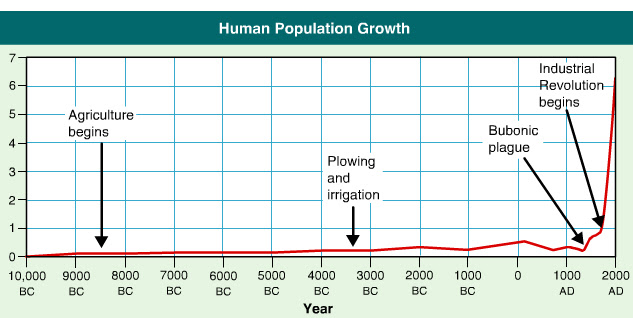Throughout most of human history, did human population size skyrocket, remain at carrying capacity, decrease, grow very slowly, or show boom and bust cycles?
1 Answer
Broadly speaking, human populations over the last 2 million years have remained fairly small and constant, except in the last 200 years or so.
Explanation:
Human populations were probably fairly small and constant over the last 2 million years, and it wasn't until the advent of agriculture (10.000 years ago) and then after the industrial revolution that our numbers really started to swell (see pic). When we graph human population over time, we see a J-shaped or exponential curve.
However, there is evidence that humans were nearly wiped out about 50,000 years ago, and we may have been reduced to a few thousand people. Similarly, in the last 1000 years, plagues and starvation significantly reduced populations in, for example, Europe.
The rise of agriculture and then the industrial revolution allowed more people to be fed.

In relation to carrying capacity, humans have arguably increased carrying capacity over time. With the invention of new technologies such as fire, clothing, systems for transporting water, medicines, and etc., we have expanded into environments where our ancestors would not have been found and furthered population numbers.


